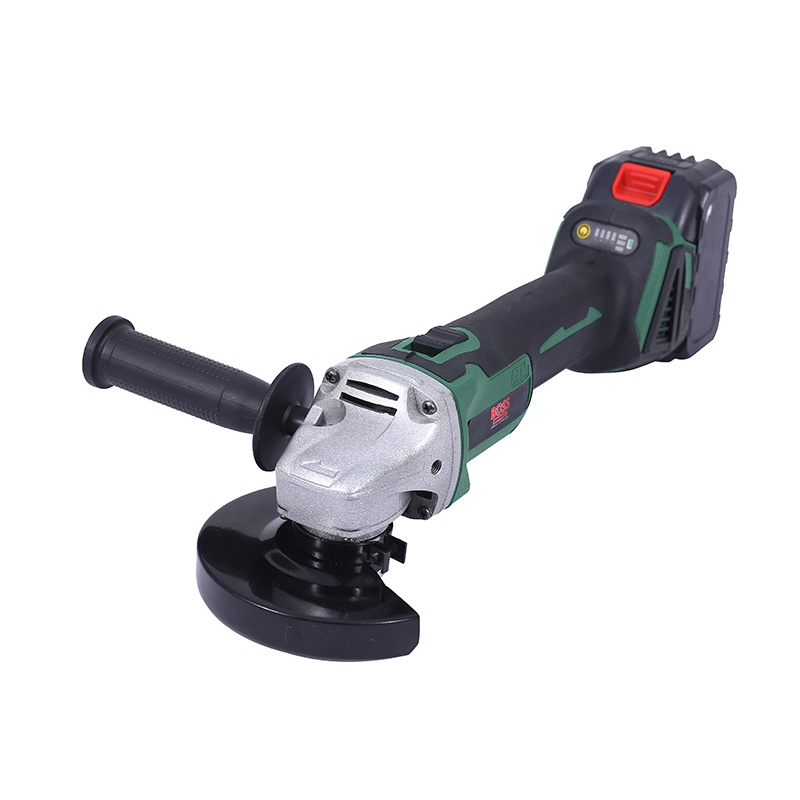The brushless cordless angle grinder represents a significant advancement in power tool technology, offering users a combination of power, runtime, and durability that was once the domain of corded models. By eliminating brushes, these tools reduce friction and wear on the motor, while modern lithium-ion batteries provide substantial energy. However, like any sophisticated piece of machinery, they are not immune to issues. Understanding the potential malfunctions of a brushless cordless angle grinder is key to its lifespan and performance. These problems can generally be categorized into those concerning the battery and electrical system, the physical and mechanical components, and the electronic controls that define its brushless operation. Recognizing the signs of these malfunctions can help users perform basic troubleshooting and know when to seek professional repair.

Battery and Power-Related Issues
The cordless nature of the tool means its power source is often the place to look when problems arise. While lithium-ion batteries are reliable, they and their supporting systems can present specific challenges.
Failure to Power On: The immediate malfunction is a complete failure to start. This can often be traced to a depleted or faulty battery. However, it can also be caused by issues with the battery terminals on the tool itself, which may become corroded or bent, preventing a proper electrical connection. A simple check involves trying a different, known-good battery in the grinder.
Reduced Runtime and Power: A noticeable decline in performance, where the tool loses power under load or the battery depletes unusually quickly, is a common concern. This is frequently a sign of a battery pack nearing the end of its service life, as its ability to hold a charge diminishes over time. It can also be caused by using a battery with an amp-hour (Ah) rating that is too low for the demanding application of a brushless cordless angle grinder.
Charging Difficulties: Problems can also occur off the tool. A battery that does not charge, charges very slowly, or shows an incorrect charge level on the indicator may have an internal fault with its Battery Management System (BMS) or a failure of the charging circuitry within the charger itself.
Physical and Mechanical Wear and Tear
Despite the reduced internal wear of a brushless motor, the physical components of the grinder are still subject to significant stress, debris, and potential damage.
Switch and Trigger Mechanism Failure: The trigger is one of the frequently used parts of the tool. Over time, the switch mechanism can fail electronically, or the physical trigger can become stuck or unresponsive due to an accumulation of dust and debris inside the handle. This can prevent the tool from starting or cause it to operate intermittently.
Bearing and Spindle Problems: The bearings that support the motor armature and the grinding disc spindle endure high rotational speeds. Worn-out bearings will produce a loud grinding or whining noise and can excessive vibration. In severe cases, a seized bearing can lock the spindle entirely. Similarly, a damaged spindle thread can make it difficult to secure or remove the grinding disc.
Guard and Attachment Issues: While not a functional malfunction of the tool itself, a guard that is stuck or cannot be adjusted properly compromises safety. This is often due to physical damage or debris jamming the mechanism. For a brushless cordless angle grinder, ensuring all safety components function smoothly is a critical part of its operational readiness.
Electronic and Control System Faults
The sophisticated electronics that give a brushless motor its advantages can also be a source of specific malfunctions that are less common in simpler, brushed tools.
Electronic Speed Control (ESC) Failure: The onboard computer that regulates the motor's speed based on trigger input can fail. This may manifest as the tool running only at full speed regardless of trigger pressure, or the speed may surge and fall erratically. This type of issue typically requires professional diagnosis and repair.
Motor Stator Damage: Although the brushless motor has no brushes to replace, it is not impervious to damage. The stationary windings, known as the stator, can overheat and burn out if the tool is pushed beyond its limits or used in a poorly ventilated manner. A telltale sign is a distinct burning smell and a complete loss of power, even with a known-good battery.
Sensor and Communication Errors: Some advanced brushless cordless angle grinder models utilize sensors to communicate with "smart" battery packs. If these communication protocols are disrupted by dirt, damage, or a firmware glitch, the tool may not operate correctly, potentially limiting its power or refusing to start as a safety precaution.



 English
English русский
русский Español
Español







